LANDS OF LEONARDO
Casa Lionardo is immersed in the Land of Leonardo, the places and landscapes that fed the visions and creativity of the Tuscan genius, who was born and raised in this territory.
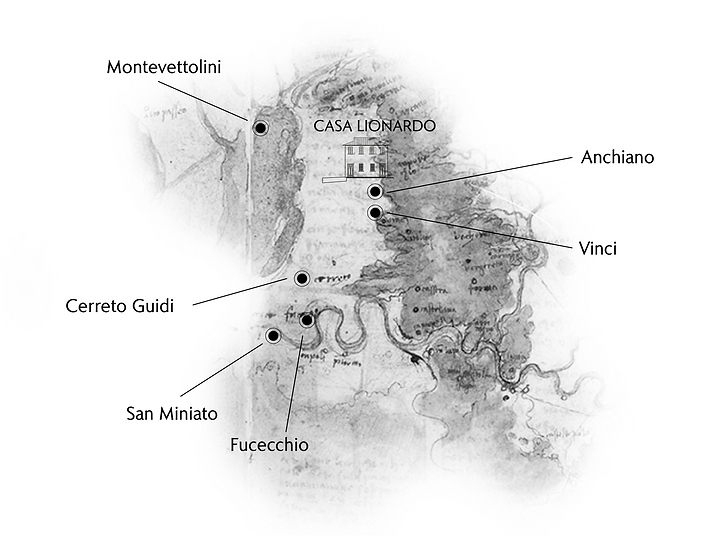
Anchiano è una piccola frazione del Comune di Vinci immersa tra i verdi colli del Montalbano, ed è famosa in tutto il mondo per essere stata il luogo di nascita di Leonardo da Vinci.
In questo luogo infatti è situata la Casa Natale di Leonardo, ancor oggi visitabile, meta di pellegrinaggio per migliaia di turisti ogni anno.
Anchiano rappresenta una tappa fondamentale
per tutti gli appassionati d'arte, ma anche per coloro
che amano la natura.
Infatti, da questo piccolo comune passano numerosi percorsi ed itinerari che permettono di scoprire a fondo la bellezza naturalistica del territorio, ed osservare i tipici paesaggi sfumati dai quali Leonardo traeva ispirazione, e che era solito rappresentare nelle sue opere.
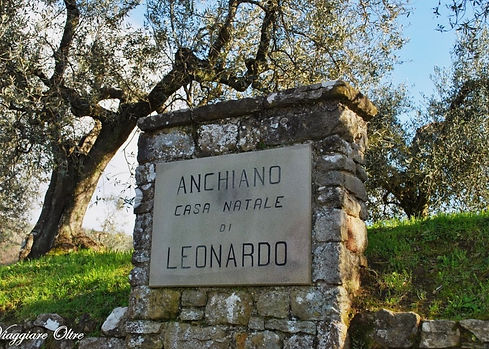
Anchiano
Anchiano is a small fraction of the City of Vinci surrounded by the green hills of Montalbano, and is famous worldwide for being the birthplace of Leonardo da Vinci.
Here is located the birthplace of Leonardo, still visited today, a pilgrimage destination for thousands of tourists every year.
Anchiano is a milestone for all art lovers, but also for those who love nature. Indeed, from this small town pass many paths and itineraries that allow you to fully discover the natural beauty of the territory, and let observe the typical shaded landscapes from which Leonardo drew inspiration and which he used to represent in his works.
Vinci
The area of Montalbano is the ideal place from which to visit all of Tuscany, being centrally located and close to the major cities of art, Florence, Pisa, Lucca, Siena and the Tuscan coast. The dominant landscape is hilly, with wides olive trees and vineyards. In these places Leonardo lived his childhood and it is to these lands that the young genius owes his curiosity towards nature, man and science.
Among the many wonderful paths, the Leonardino stands out, it is a naturalistic, spiritual and cultural path in the footsteps of the Young Genius.
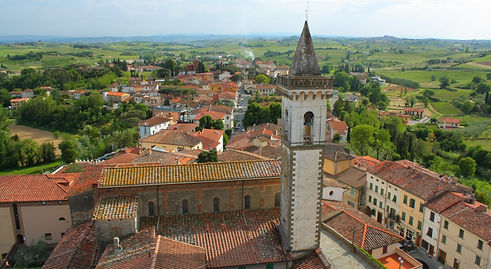
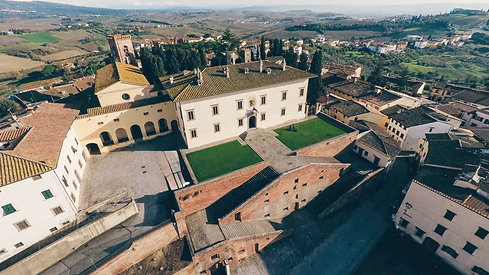
Cerreto Guidi
Cerreto Guidi is a characteristic Tuscan burg that rises between the olive trees and the vines of the hills of Leonardo.
The history of this town is strongly related to that of the noble Medici family. In 1556, Cosimo I de' Medici chose Cerreto Guidi to build his country residence, thanks to the strategic position of the burg, easily accessible from Florence and not so far from the woods of Montalbano and the Fucecchio Marsh.
The majestic villa still stands out on the historic center of Cerreto Guidi and, together with the nearby Pieve of San Leonardo, represents the famous Medicean Complex, declared a UNESCO World Heritage Site in 2013.
San Miniato
Located along the Via Francigena, in its historic center San Miniato sorrounds a centuries-old history where you can get lost among breathtaking views and the scent of truffles.
Since ancient centuries and despite its small size, it has played an important role in the history of Central Italy and whose traces can be perceived by walking through its streets and admiring churches and palaces of that time.
The central position of San Miniato, situated right in the valley of the Arno River, has allowed to enhance the strategic location of this burg, where, over the centuries, artists, traders, pilgrims and even popes stayed.
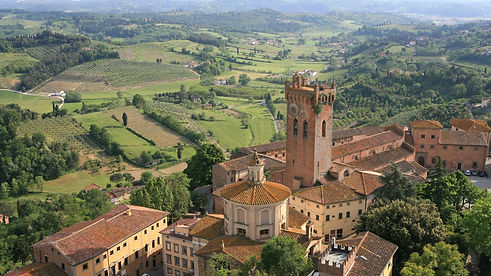
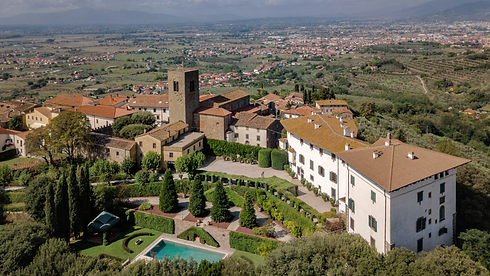
Montevettolini
The burg occupies the top of a hill on the southern side of Montalbano and keeps the traces of its origins as a medieval castle.
Leonardo represents Montevettolini as a burg surrounded by walls both in one of the maps representing the lower course of the Arno and in the famous landscape of the young Leonardo, dated to 1473.
It is believed, indeed, that the view represents a glimpse of the Fucecchio Marsh seen from the relief of Belvedere, on Montalbano, with part of the defenses of Montevettolini castle visible on the left of the drawing, while on the right, from a distance, would have represented the castle of Monsummano, on top of a relief with an inverted cone shape.
Fucecchio
Fucecchio rises on the right bank of the Arno river, halfway between Florence, Pisa and Lucca. Its history is closely related to the Via Francigena that, right in the territory of Fucecchio, crosses the Arno to continue towards the Valdelsa, in the presence of the Medici family, who, during the Renaissance, established here the administrative center of the grand ducal farms.
This natural area, known for being the largest internal marsh in Italy, was enhanced and exploited since the Renaissance, when Cosimo I de' Medici ordered the building of Cappiano Bridge that crossed it.
Today the Padule is one of the last refuges for many animal species and can be visited on foot, by bike along the paths that cross it or with traditional boats.

